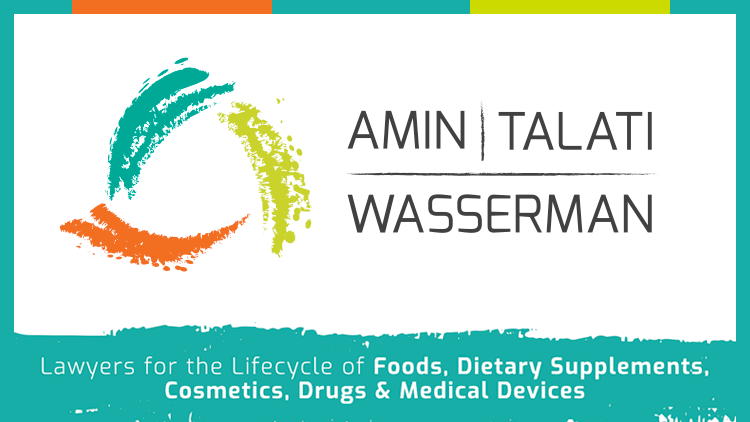Promotional Features
Cosmetic Companies Face Increasingly Challenging Web of Chemical Bans and Reporting Obligations
With little federal law restricting the use of potentially harmful ingredients in cosmetics, industry must comply with an ever-expanding array of state laws.
It goes without saying that cosmetics are an integral part of our day-to-day lives, whether we are using products to maintain basic hygiene, to enhance our appearance, to smell better, or all the above. Analysts estimate that the global cosmetic industry will grow from US$ 398.42 billion in 2020 to US$ 665.18 billion by 2030 – with the US being one of the largest consumers of cosmetics in the world. The projected market expansion can be attributed, in large part, to the widespread adoption of skincare and personal care products, as well as innovations in formulations and packaging. What might hinder market expansion? No doubt, growing concerns over the use of dangerous chemicals and the safety of cosmetic products overall.
Enacted by Congress in December 2022, the Modernization of Cosmetics Regulation Act of 2022 (MoCRA) provided the first significant update to cosmetics regulation since the enactment of the Federal Food, Drug and Cosmetic Act in 1938. MoCRA, however, did not address the use of potentially harmful chemicals in cosmetics, and instead explicitly granted states the ability to enact their own ingredient restrictions and their own reporting and disclosure requirements. As such, in the absence of federal law, and facing an ever-expanding patchwork of state laws, cosmetic industry professionals have significant compliance challenges ahead of them.
The Global Landscape
On the global front, numerous jurisdictions around the world have taken significant steps to ensure the safety of cosmetics and their ingredients. With few exceptions, European Union countries prohibit substances classified as carcinogenic, mutagenic, or toxic for reproduction in cosmetic products. The Canadian government maintains a Cosmetic Ingredient Hotlist that includes hundreds of chemicals and contaminants prohibited and restricted from cosmetics, such as formaldehyde, triclosan, and more. Add to that, over 40 countries, including Australia, Cambodia, Japan, and Vietnam, have restrictions on the use of chemicals in cosmetics that are more prohibitive than those in the US.
The State of the States
Due to what some perceive as FDA’s failure to step in to protect public health, multiple states in the US have begun enacting ingredient prohibitions and reporting and disclosure requirements.
Banned Ingredients in California and Maryland
Two of the more restrictive ingredient bans are California’s Toxic-Free Cosmetic Act (AB 2762, enacted in September 2020) and, the nearly identical, Maryland House Bill 43 (enacted in May 2021), which banned 24 chemicals from cosmetics – all which are already banned in the EU. Under these two state laws, which go into effect on Jan. 1, 2025, the following ingredients will be banned from use in cosmetics: (1) dibutyl phthalate; (2) diethylhexyl phthalate; (3) formaldehyde; (4) paraformaldehyde; (5) methylene glycol; (6) quaternium-15; (7) mercury; (8) isobutylparaben; (9) isopropylparaben; (10) m-Phenylenediamine and its salts; (11) o-Phenylenediamine and its salts; and (12) thirteen specific per- and polyfluoroalkyl substances (PFAS) and their salts. California and Maryland also clarify that a “technically unavoidable trace quantity” of one of the 24 ingredients, and where the “trace quantity stems from impurities of natural or synthetic ingredients, the manufacturing process, storage, or migration from packaging,” will not cause a violation of the law.
But wait, there’s more. California was not done banning ingredients when it passed the Toxic-Free Cosmetic Act. In 2022, with the passage of AB 2771, the Golden State expanded its prohibitions against some PFAS to ban ALL intentionally added chemicals within the PFAS family (class of fluorinated organic chemicals containing at least one fully fluorinated carbon atom). And now California is considering further legislation, (AB 496), to prohibit an additional 25 chemicals, plus 16 specific boron substances. As drafted, the prohibitions in AB 496, if passed, would go into effect on Jan. 1, 2027.
Banned Ingredients in Washington
California is not the only state looking to expand prohibitions. Seen by many as an overly expansive version of the bans in California and Maryland, Washington’s Toxic-Free Cosmetics Act (the WTFCA), HB 1047, enacted on May 15, 2023, is now one of the most restrictive state laws in the US regulating chemicals and ingredients in cosmetics.
Beginning Jan. 1, 2025, the WTFCA bans the manufacture, sale or distribution of cosmetics containing nine intentionally added chemicals or chemical classes including PFAS, ortho-phthalates, triclosan, lead, methylene glycol, formaldehyde and formaldehyde releasers. It also prohibits the sale of cosmetics containing trace levels of lead or lead compounds at higher than 1 part per million. However, in-state retailers may sell through existing stock until Jan. 1, 2026.
Under the WTFCA, Washington’s Department of Ecology must provide a list of chemicals that release formaldehyde and may be subject to bill’s restriction. The department must identify an initial list of no more than 10 such chemicals, to take effect on or after Jan. 1, 2026, and additional restrictions on remaining chemicals would take place on or after Jan. 1, 2027. Notably, the WTFCA would ban a large group of commonly used formaldehyde-releasing agents that are allowed for use as preservatives in the EU. In addition, although the WTFCA does not explicitly exempt unavoidable trace quantities, like the laws in California and Maryland, the prohibitions are specifically intended to apply to intentionally added chemicals or chemical classes.
Banned Ingredients in New York State
New York is another state enacting chemical and compound restrictions to address the potential presence of contaminants. For example, since Dec. 1, 2022 (S.4389-B/A.6295-A enacted December 2019), it is illegal to sell cosmetics with a contamination limit of 1,4-Dioxane over 10 parts per million and 2 parts per million for personal care products (the limit for personal care products decreases to 1 part per million effective Dec. 31, 2023). In addition, since Jan. 1, 2023, New York prohibits the sale of any cosmetic product or personal care product containing mercury and several mercury containing compounds.
Notably, New York’s distinction between “cosmetics” and “personal care products” is fairly unique. New York distinguishes “personal care products” as products intended for cleaning or cleansing, e.g., shampoo, conditioner, soap, bath gels, and other bathing products, from other “cosmetics,” which is aligned with the federal definition of the term.
Reporting and Disclosure Requirements
In addition to ingredient bans and restrictions, multiple states have enacted various reporting and disclosure requirements that cosmetic companies need to be aware of.
Intentionally Added PFAS Reporting Obligations
As states continue to evaluate the impact of toxic chemicals from consumer products, some are gathering information to help them evaluate the use of specific chemicals or chemical classes within their state. For example, as of Jan. 1, 2023, Maine requires manufacturers of products sold in the state to provide its Department of Environmental Protection (DEP) written notification that includes the following information:
- Description of the product;
- Purpose for which PFAS is used in the product;
- Amount of each of the PFAS, reported as an exact quantity determined using commercially available analytical methods or as falling within a range;
- Name and address of the manufacturer, and a contact person; and
- Any additional information established by the department.
DEP will use the gathered information to prioritize the development of rules to prohibit the sale of products that are most likely to cause contamination of the State's land or water resources if they contain intentionally added PFAS. In addition, under the new law, by Jan. 1, 2030, unless DEP has determined by rule that the use of PFAS in a specific product or product category is a currently unavoidable use, the sale of products containing intentionally added PFAS will be prohibited.
Fragrance and Flavor Ingredient Reporting
While MoCRA will eventually require fragrance allergen listing on cosmetic product labels, did you know that the California Fragrance and Flavor Ingredient Right to Know Act of 2020 (SB312), passed in 2020, already requires the disclosure of fragrance and flavor ingredients? SB312 requires companies selling retail cosmetic or professional salon products in California to report the presence of any fragrance or flavor ingredient that appears on one or more of the 23 authoritative hazard lists referenced in the law to the California Safe Cosmetics Program (CSCP). The reported information is then available to the public through an online database. Although fragrance ingredients that are “known to cause cancer or reproductive toxicity” must be reported no matter their concentration, fragrance allergens need only be reported at concentrations of more than 0.01 percent for rinse-off products or 0.001 percent for leave-on products.
SB312 was an expansion of the California Safe Cosmetics Act, SB 484 ─ enacted in 2005 (CSCA) ─ which has, since 2007, required companies selling cosmetics into California to report to the CSCP any products that contain any ingredient that is a chemical identified as “causing cancer or reproductive toxicity,” as found on five authoritative lists. In other words, SB312 expanded the CSCA to include an additional 13 authoritative lists which now include more than 3,000 reportable chemicals.
Key Takeaway
Compliance guidelines designed to ensure cosmetic product ingredients are acceptable for nationwide distribution are not sufficient if merely addressing FDA regulatory obligations. As state regulations proliferate, it is critical compliance programs also include ongoing assessments to meet ever-changing state laws before bringing products to market.
Written By Angela Diesch, Partner, Amin Talati Wasserman

